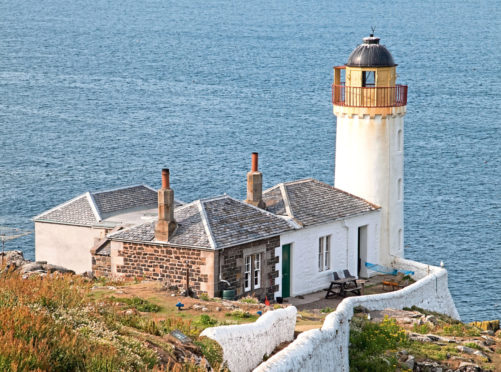
The Firth of Forth is a treasure trove of discovery with one of the world’s most iconic bridges, banks lined with picturesque villages and waters home to unspoiled beauty spots such as the Isle of May.
The Isle of May Nature Reserve is found in the very centre of the Forth estuary, six miles from Anstruther on Fife’s south-west coast. This small island measures just 141 acres but it is crammed with enough wildlife, history and intrigue to provide hours of exploration.
A day of adventure on the Isle of May begins with the journey there. Several companies offer boat trips, starting from both Anstruther and North Berwick, and a choice of vessels to suit your need for speed!
Opt for a RIB (ridged inflatable boat) ride if you want an exhilarating route across the Forth, or if you prefer something laid-back then the ferry is more tranquil.
Before you have even reached the island’s shores, you will be met by its residents. During the peak months from April to September, the island plays host to more than 200,000 seabirds including razorbills, kittiwakes, shags, guillemots, fulmars, eider ducks and, of course, the beloved puffin. You will likely hear this rabble of seabirds long before you reach the island.
Make sure to keep an eye out for seals, the occasional dolphin, and even humpback whales, which are also spotted in this part of the Forth.
Upon the island itself, you will have plenty time to look around. On a beautiful summer day, there are few places more idyllic and the whole family will enjoy exploring.
Alongside wildlife, the island also boasts a rich history of monks, Vikings and smugglers to learn about.
A trip to the Isle of May is as much about the journey as it is about the destination.
Fife’s south coast is lined with beautiful walks, historical treasures and impressive landmarks but one in particular is not to be missed.
Hidden right under your feet as you traverse the Fife Coastal Path are the Wemyss Caves. Just outside the picturesque town of Wemyss – derived from the Gaelic for cave – is one of Scotland’s best kept secrets. The warren of passages and chambers that make up Wemyss Caves make for an exciting day of exploration, with added historical significance. This important landmark is home to a unique collection of Pictish carvings that are up to 1,700 years old.
Nearly 50 carvings still survive on the cave walls, along with early Christian crosses, and the caves sit beneath the ruins of MacDuff Castle, once home to the Earls of Fife.

Enjoy the convenience of having The Sunday Post delivered as a digital ePaper straight to your smartphone, tablet or computer.
Subscribe for only £5.49 a month and enjoy all the benefits of the printed paper as a digital replica.
Subscribe